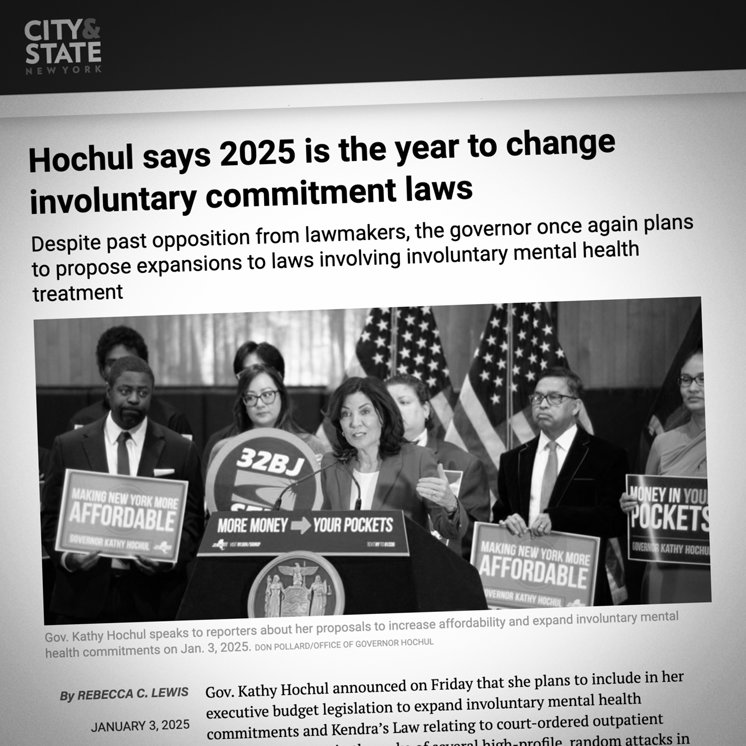Governor Kathy Hochul was pushing—and pushing hard—to expand the conditions under which New Yorkers could be handcuffed, tossed in a police car and driven to a psychiatric facility against their will.
Specifically, she sought to remove the requirement built into existing law that an individual must pose a threat to themselves or others before police could initiate that procedure.
Hochul even proposed allowing those who display a “refusal or inability to meet his or her essential need for food, shelter, clothing or health care” to be involuntarily committed, too. In other words, Governor Hochul’s plan would allow sweeping all homeless off the streets—crazy or not—and stuffing them into insane asylums.
“Those are tough-sounding but terribly false solutions.”
“How do you think we avoid this from being a sweeping change, so that we are essentially saying, homelessness now equals: You could be involuntarily committed?” challenged Senator Samra Brouk of Rochester.
Involuntary commitment is nothing new in New York City. The mayor’s office reports that, “Last year, involuntary transports to hospitals occurred more than 7,700 times in New York City, most initiated by law enforcement.”
But after several deadly attacks by mentally unstable individuals, the governor sought to stoke fear in order to build support for her drive to expand involuntary commitment. “Public safety is my top priority and I will do everything in my power to keep New Yorkers safe,” she said on January 3. “I’ve been pushing these changes for the past three years—the time for legislative action is now.”
But the legislature apparently prioritized human rights instead, dropping Hochul’s authoritarian recommendations from the budget.

In mid-March, the New York legislature “intentionally omitted Governor Kathy Hochul’s proposals to expand involuntary commitment in New York,” said one mental health reform nonprofit. “The Assembly entirely excluded these changes, while the Senate removed the expansion of criteria to involuntarily commit people.”
Human rights advocates had pulled out all the stops to make it happen. And they did.
“We are not going to coerce or hospitalize our way out of heartbreaking disasters,” said Alliance for Rights and Recovery CEO Harvey Rosenthal. “Those are tough-sounding but terribly false solutions that would simply force people into services and systems that have already failed them far too many times in the past.”
In a letter to the New York State Senate Majority Leader and the Assembly Speaker, a coalition of disability rights and social justice organizations stated: “A continued reliance on involuntary care will simply maintain the broken mental health care system that leaves people in need in unacceptable states of distress and deterioration.”
In other words, involuntary psychiatric “treatment” doesn’t work, as the UN Office of the High Commissioner on Human Rights and World Health Organization have confirmed. In fact, they’ve gone much further, calling it a blatant violation of basic human rights.
But for some reason, Hochul wanted to go back to the bad old days of asylum warehouses—for the insane and not insane—delivering torture in the name of help. It’s a human rights atrocity psychiatrists still perpetrate today.
“It is exactly a return to institutionalization,” said New York Lawyers for the Public Interest’s Ruth Lowenkron of Hochul’s proposal. “It is absolutely a return to the days of yore that did not work.”






















